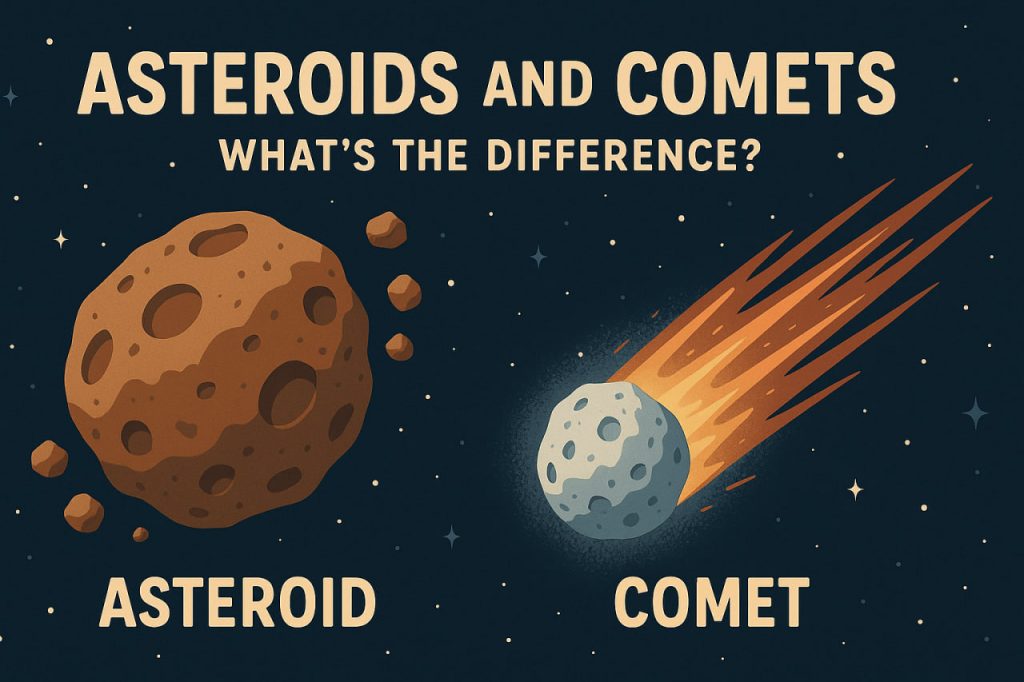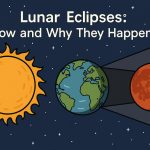Asteroids and comets are both small celestial bodies that orbit the Sun, and while they may seem similar at first glance, they are very different in composition, origin, and behavior. Understanding the differences between asteroids and comets helps scientists learn more about the formation and evolution of the Solar System.
What Are Asteroids?
Asteroids are rocky objects that orbit the Sun, mostly found in the asteroid belt between Mars and Jupiter. They are made of metal and rock, and most do not have atmospheres or tails.
Key characteristics of asteroids:
- Composed mostly of silicate rock, nickel, and iron
- Generally irregular in shape, though some are nearly spherical
- Range in size from tiny pebbles to objects hundreds of kilometers wide
- Often remain inactive, meaning they don’t produce light or visible activity
- Many are leftovers from the early formation of planets
Some asteroids have moons, and a few have orbits that bring them close to Earth, called Near-Earth Objects (NEOs).
What Are Comets?
Comets are icy bodies that come from the colder outer regions of the Solar System, especially the Kuiper Belt and Oort Cloud. They are made of a mixture of ice, dust, and rock.
Key features of comets:
- Have frozen cores made of water, carbon dioxide, methane, and other ices
- When they approach the Sun, heat causes them to release gas and dust, forming a glowing coma and often a long tail
- Their tails always point away from the Sun, pushed by solar wind and radiation
- They often follow elliptical orbits, which means they appear only once in many years
Famous comets like Halley’s Comet are visible from Earth only periodically.
How Do They Behave Differently?
- Asteroids are usually stable and remain within the inner Solar System.
- Comets are more dynamic—when they get close to the Sun, they can become bright and active, forming tails that can stretch millions of kilometers.
- Because of their icy content, comets are often called “dirty snowballs.”
Comets can sometimes break apart, leaving behind trails of debris that create meteor showers when Earth passes through them.
Why the Difference Matters
Studying asteroids and comets gives scientists clues about:
- The early history of the Solar System
- The distribution of water and organic materials
- The potential risks of collisions with Earth
- The origins of life—some theories suggest comets delivered water and molecules necessary for life to Earth
NASA and other space agencies have sent probes to both asteroids and comets, such as OSIRIS-REx and Rosetta, to collect data and even bring back samples.
Glossary
- Asteroid Belt – A region between Mars and Jupiter where most asteroids are located.
- Kuiper Belt – A region beyond Neptune filled with icy bodies, including comets.
- Oort Cloud – A distant, spherical shell of icy objects surrounding the Solar System.
- Coma – A glowing cloud of gas and dust around a comet’s nucleus.
- Near-Earth Object (NEO) – An asteroid or comet with an orbit that brings it close to Earth.


